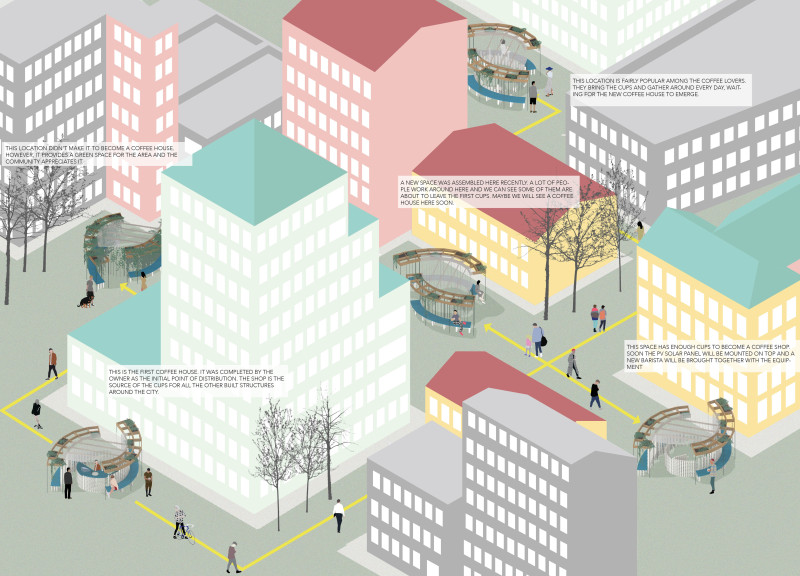5 key facts about this project
The architectural project titled "The Cup" presents a solution to environmental challenges posed by single-use coffee cups. Located in an urban environment, the design underscores the importance of sustainability while promoting community interaction. "The Cup" reimagines a traditional coffee shop experience, substituting disposable items with reusable, biodegradable materials.
The structure features a modular design that adapts to the number of users, creating a dynamic spatial arrangement conducive to social engagement. By facilitating a shared experience, the architectural design encourages users to rethink their consumption habits and fosters a sense of community around sustainable practices.
Unique Aspects of Design
The adaptability of "The Cup" is a defining characteristic, allowing the space to expand or contract depending on user demand. This flexibility is showcased through a series of movable partitions and adaptable seating arrangements that can be reconfigured as needed. Additionally, the use of clay cups, which are biodegradable and glazed for hygiene, ensures that the project aligns with its sustainability goals.
The design also includes a game-like experience for users, encouraging exploration within the space. The integration of plants not only enhances the aesthetic appeal of the environment but also contributes to air quality and user comfort. The employment of renewable energy sources, such as photovoltaic solar panels, further strengthens the project's commitment to sustainability and reduces its carbon footprint.
Functional and Structural Components
"The Cup" integrates various materials to achieve its architectural vision. Key materials include clay for the cups, wood for structural and decorative use, and painted MDF for furniture elements. Metal hollow rods offer lightweight structural support, ensuring durability while maintaining a refined aesthetic.
The project emphasizes community interaction through its layout, which prioritizes open spaces for mingling and socializing. Barista stations are designed to foster dialogue between staff and customers, transforming the coffee purchase into a more engaging experience. The adaptable design effectively accommodates different group sizes and activities, making "The Cup" suitable for various contexts within the urban landscape.
To gain deeper insights into "The Cup," including detailed architectural plans, sections, and design concepts, readers are encouraged to explore the project's official presentation. The various architectural ideas illustrated within the presentation serve to expand understanding of its innovative approach to merging sustainability with community-focused design.






















































